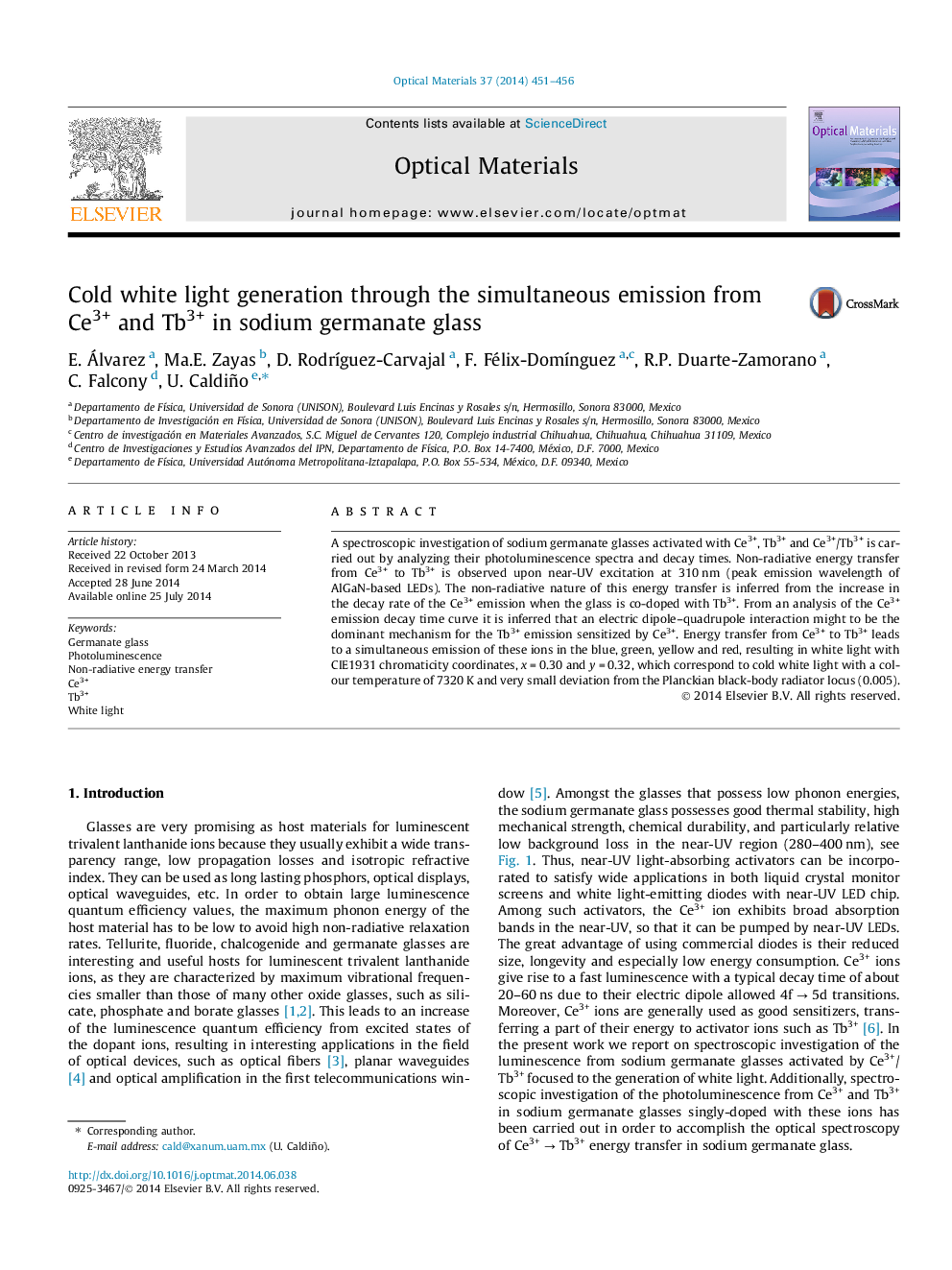| Article ID | Journal | Published Year | Pages | File Type |
|---|---|---|---|---|
| 1494192 | Optical Materials | 2014 | 6 Pages |
•Sodium germanate glass is optically activated with Ce3+/Tb3+ (GNCT).•Non-radiative energy transfer Ce3+ → Tb3+ takes place in GNCT.•Cold white light (0.30, 0.32) is generated by GNCT pumped with 310 nm-UV light.
A spectroscopic investigation of sodium germanate glasses activated with Ce3+, Tb3+ and Ce3+/Tb3+ is carried out by analyzing their photoluminescence spectra and decay times. Non-radiative energy transfer from Ce3+ to Tb3+ is observed upon near-UV excitation at 310 nm (peak emission wavelength of AlGaN-based LEDs). The non-radiative nature of this energy transfer is inferred from the increase in the decay rate of the Ce3+ emission when the glass is co-doped with Tb3+. From an analysis of the Ce3+ emission decay time curve it is inferred that an electric dipole–quadrupole interaction might to be the dominant mechanism for the Tb3+ emission sensitized by Ce3+. Energy transfer from Ce3+ to Tb3+ leads to a simultaneous emission of these ions in the blue, green, yellow and red, resulting in white light with CIE1931 chromaticity coordinates, x = 0.30 and y = 0.32, which correspond to cold white light with a colour temperature of 7320 K and very small deviation from the Planckian black-body radiator locus (0.005).
